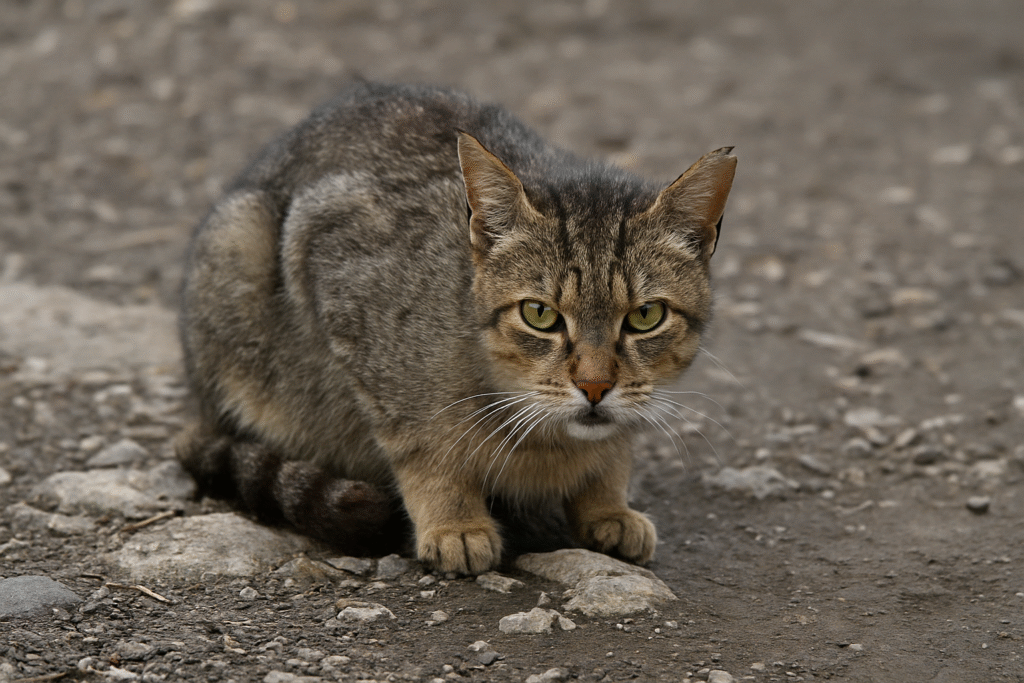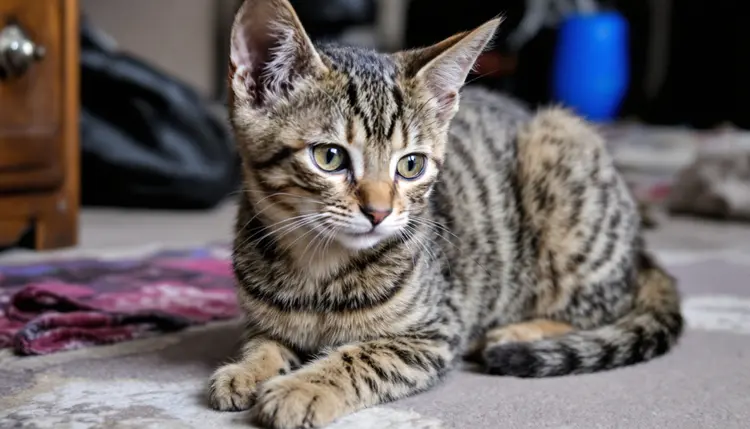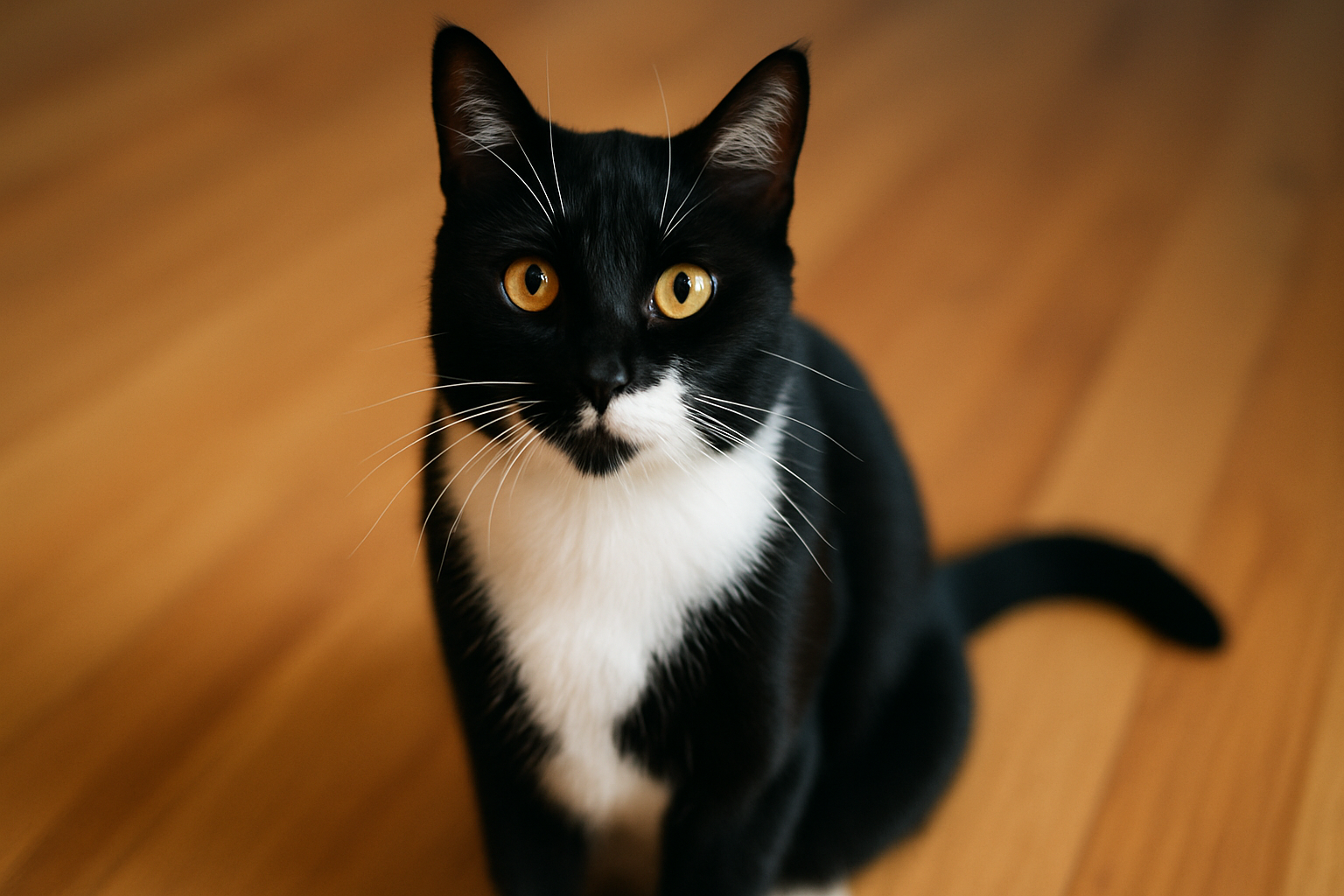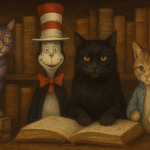When I was six, I met my first real cat—a scruffy orange tabby named Oliver who lived under our neighbor’s porch. He was grumpy, fluffy, and had the confidence of a king. One summer evening, he walked right up, sat in my lap, and started purring like a tiny motorcycle. That moment changed everything for me. I didn’t just like cats—I became obsessed.
So if you’re here wondering what is a cat, you’re not alone.
Whether you’re just curious or thinking about adopting one, this friendly guide will give you the full scoop—from cat definition to quirky habits and even what a group of them is called. Ready to fall in love with felines? Let’s go.
What Type of Animal Is a Cat?
A cat is a mammal, like us—but with more whiskers and attitude. Scientifically, they belong to the Felidae family, which includes lions, tigers, and cheetahs. Your little tabby? She’s basically a miniature jungle cat in disguise.
Cat species explained: The one most of us know is the domestic cat (Felis catus), which humans have lived with for thousands of years. And yet, they still pretend we’re their staff.
Here are a few basic cat facts to wow your friends:
- Cats walk on their toes (like ballerinas)
- Their whiskers detect air shifts and tiny movements
- They sleep about 13–16 hours a day (talk about goals)
- They can jump six times their body length
By the way, what is a group of cats called? It’s called a clowder—yes, really! Some people also say a glaring when they don’t know each other well (sounds about right).
What Makes a Cat a Cat?
Let’s be real: what makes a cat a cat isn’t just the fluff or the tail.
It’s the sass. The independence. The slow blink that feels like a secret handshake. The way they’ll knock over your drink just to watch you react. These are all signature feline characteristics.
They:
- Hunt toys like wild prey
- Communicate with tail twitches and meows
- Pretend not to care—but totally do
When I brought home Luna, my tuxedo cat, she spent the first three days hiding under the couch. On day four? She jumped onto my laptop during a Zoom call and took a nap. Classic cat move.
What Is the Life Expectancy of a Cat?
This is a super common question, and I get it—if you’re going to share your life with a cat, you want to know how long that bond might last.
So, what is the average lifespan of a cat? For most cats, it ranges from 12 to 18 years. Some make it past 20 with great care.
What is the average lifespan for a house cat? That number climbs higher—typically 14 to 20 years—because indoor cats avoid many dangers like cars, predators, and disease.
So yes, with good food, regular vet visits, and a cozy lap, your cat can be your companion for nearly two decades.
What Is a Feral Cat?
Not all cats are snuggly lap creatures. What is a feral cat? It’s a cat that was born and raised in the wild without human contact. Unlike strays (who may have once had homes), feral cats are often afraid of people and live in colonies outdoors.
They:
- Avoid humans
- Hunt for food or rely on feeding stations
- Often live shorter lives due to harsh conditions

Some groups work to trap, neuter, and return (TNR) feral cats to manage populations humanely. But it’s important to remember—feral doesn’t mean mean. It just means they’ve had a very different life.
What Is a Female Cat Called?
Here’s a fun trivia tidbit: what is a female cat called? If she’s not spayed, she’s often called a queen—which is honestly perfect. She knows she’s royalty.
Males are sometimes called toms, especially in breeding circles. But regardless of gender, they’ll all still demand to be fed first.
What’s the Cat Definition, Really?
The technical cat definition: a small domesticated carnivorous mammal with soft fur, sharp claws, and an independent streak.
But we all know a cat is more than that. A cat is:
- A four-legged roommate with mood swings
- A bedtime snuggler (sometimes)
- A surprise ninja who zooms at 2 a.m.

Introduction to cats? Expect unpredictability, joy, a little chaos—and a lot of hair.
Is a Cat Right for You?
Let’s ask a few things:
- Are you okay with litter boxes and random pouncing?
- Can you handle being ignored and adored in the same hour?
- Do you want a pet who doesn’t need constant attention but still forms a real bond?
Cats are great for apartment living, quiet households, and even busy people—as long as they get love on their terms.
If you’re thinking of adopting, I recommend visiting a local shelter. You’ll often find both friendly and shy cats waiting for someone just like you.
FAQ: Feline Curiosities
Q: Can cats really recognize their names?
Yes! Studies show they can. Whether they respond is another story.
Q: Are cats truly low-maintenance?
Compared to dogs, yes. But they still need care, playtime, and affection.
Q: Do all cats purr?
Most domestic cats purr—especially when content—but not all wild species do.
Q: Should I adopt a kitten or an adult cat?
Kittens are playful but high energy. Adult cats are often calmer and already litter trained.
Q: Do indoor cats live longer?
Definitely. What is the life expectancy of a cat indoors? Often 14–20+ years.
So, What Is a Cat?
Honestly? A cat is a purring, playful, sometimes puzzling little creature who can bring joy, comfort, and a dash of chaos into your world.
Whether you’re charmed by calicos or smitten with Siamese, learning what is a cat goes beyond science—it’s a lifelong adventure.
Have a cat tale to share or a burning question about feline life? I’d love to hear it. Send a message or leave a comment—because talking about cats never gets old.


